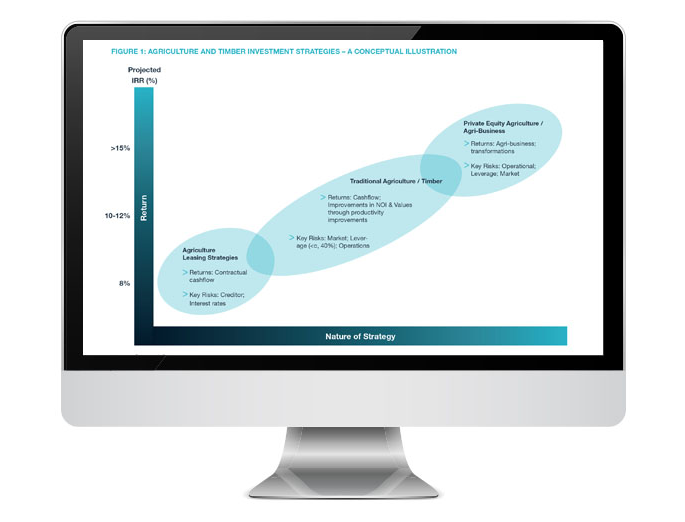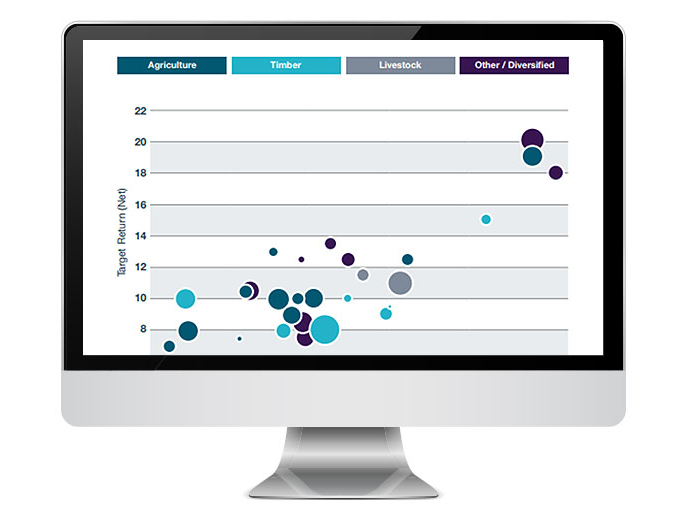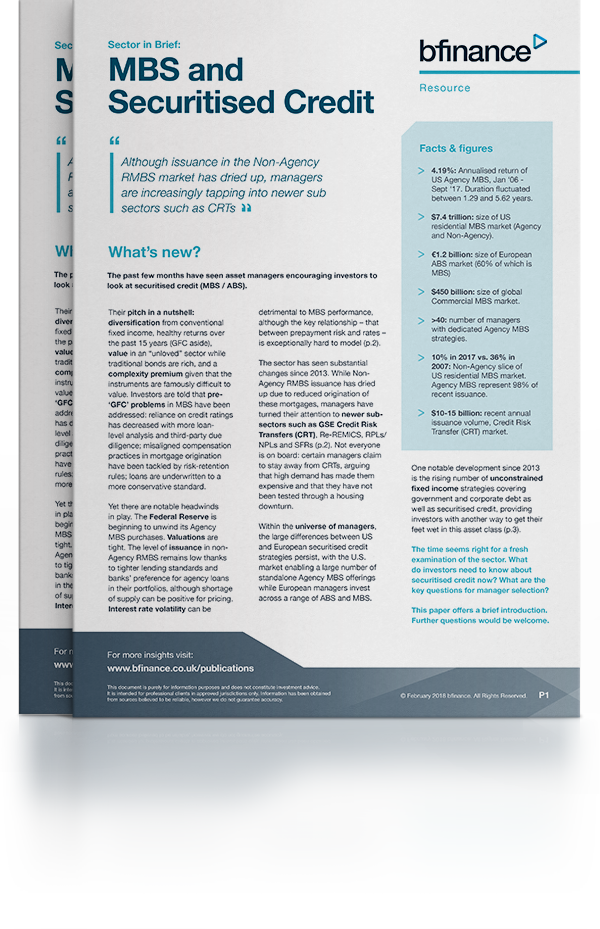
IN THIS PAPER
Understanding structured credit. This paper breaks down the jargon with a brief but comprehensive overview of terms, types and definitions: CMOs versus pass-throughs, prepayment risk, negative convexity and more.
What’s new? While Non-Agency RMBS issuance has dried up due to reduced origination, managers have turned their attention to newer sub-sectors such as GSE Credit Risk Transfers. The manager universe has also changed, with more unconstrained fixed income funds giving investors another way to get their feet wet in the asset class.
Investment and manager selection challenges. Investors face difficulties in determining valuation, selecting appropriate benchmarks and judging returns. There are four major categories of managers offering MBS or securitised credit, either alone or as part of a broader fixed income strategy.

WHY DOWNLOAD?
The past few months have seen asset managers encouraging investors to look at securitised credit (MBS / ABS).
Their pitch in a nutshell: diversification from conventional fixed income, healthy returns over the past 15 years (GFC aside), value in an “unloved” sector while traditional bonds are rich, and a complexity premium given that the instruments are famously difficult to value. Investors are told that pre- ‘GFC’ problems in MBS have been addressed.
The arguments are compelling. Yet there are notable headwinds in play: Federal Reserve unwinding of MBS purchases, low issuance in non-Agency RMBS, tight valuations and the prospect of greater interest rate volatility.
In addition, the sector has seen substantial changes since 2013, with managers turning their attention to newer sub-sectors such as CRTs, Re-REMICS and RPLs/NPLs. Not everyone is on board: certain managers claim to stay away from CRTs, arguing that high demand has made them expensive and that they have not been tested through a housing downturn. The manager universe has also evolved, including the rise of unconstrained fixed income strategies that integrate securitised credit alongside government and corporate debt.
Important Notices
This commentary is for institutional investors classified as Professional Clients as per FCA handbook rules COBS 3.5R. It does not constitute investment research, a financial promotion or a recommendation of any instrument, strategy or provider. The accuracy of information obtained from third parties has not been independently verified. Opinions not guarantees: the findings and opinions expressed herein are the intellectual property of bfinance and are subject to change; they are not intended to convey any guarantees as to the future performance of the investment products, asset classes, or capital markets discussed. The value of investments can go down as well as up.


 Français (France)
Français (France)  Deutsch (DACH)
Deutsch (DACH)  Italiano (Italia)
Italiano (Italia)  Dutch (Nederlands)
Dutch (Nederlands)  English (United States)
English (United States)  English (Canada)
English (Canada)  French (Canada)
French (Canada) 

